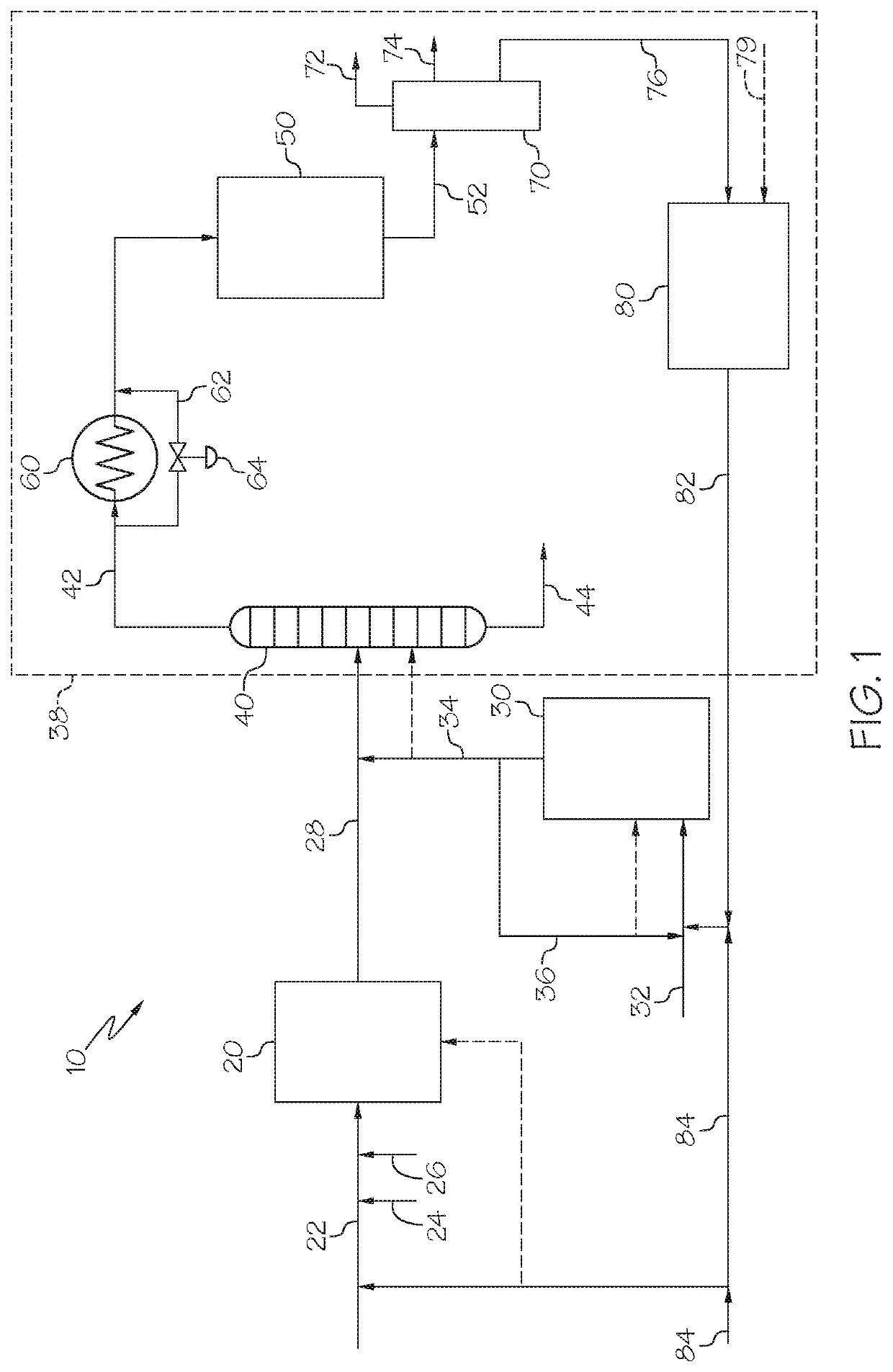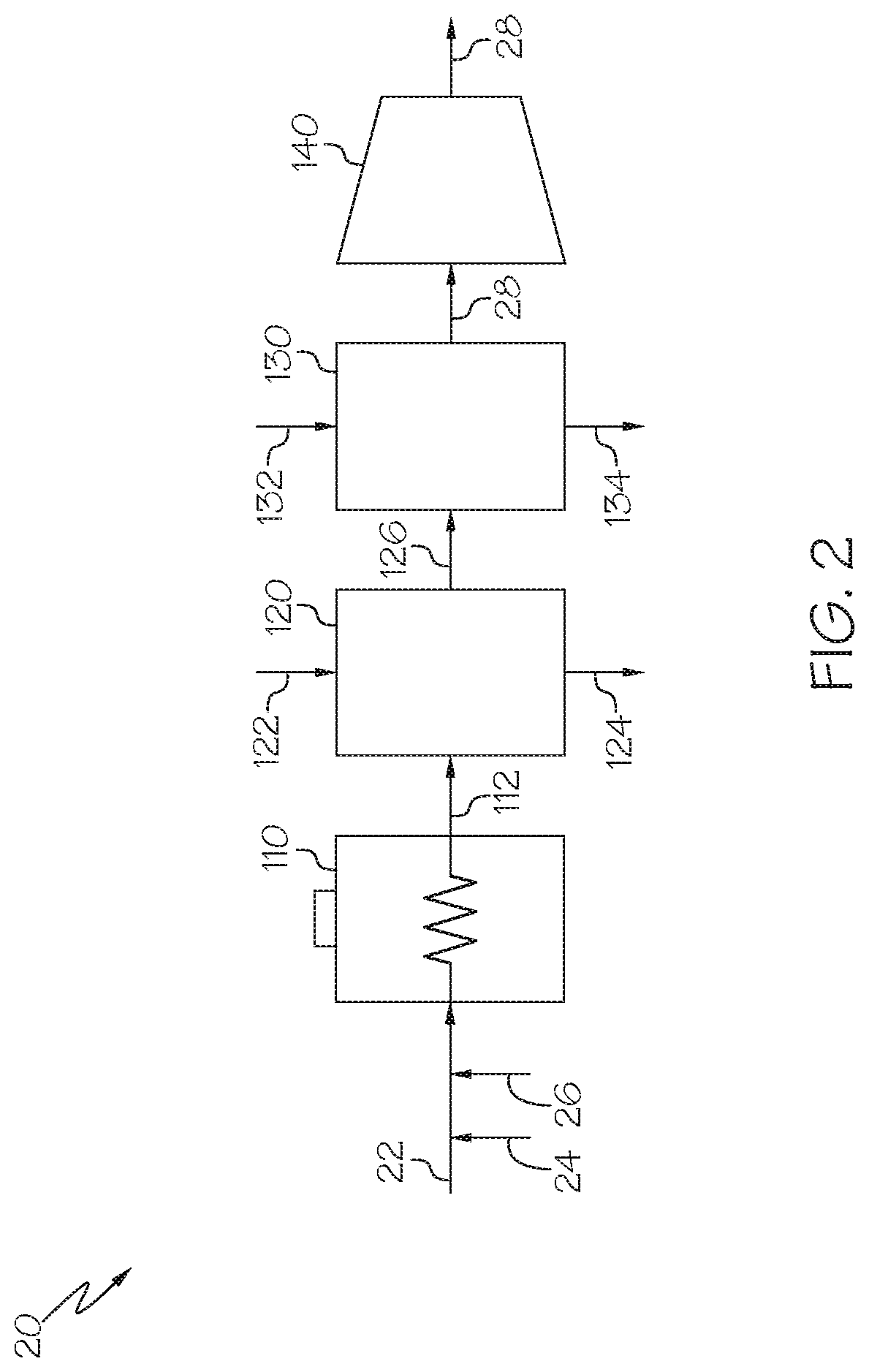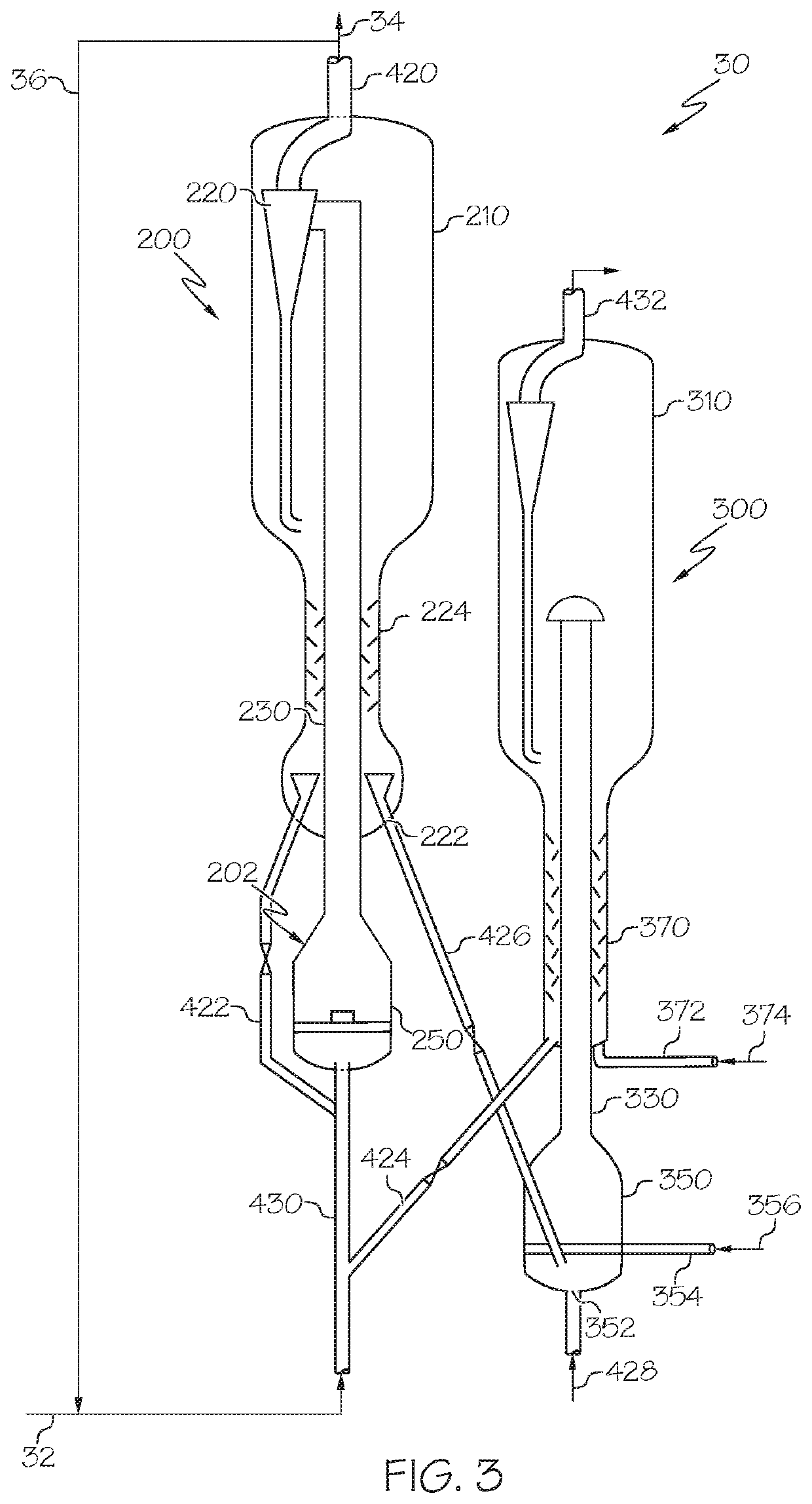Methods for operating integrated chemical processing systems for producing olefins
a chemical processing system and integrated technology, applied in the direction of hydrocarbon preparation catalysts, metal/metal-oxide/metal-hydroxide catalysts, physical/chemical process catalysts, etc., can solve the problems of increasing the activity of hydrogenation catalysts, reducing the effectiveness of downstream processes and catalysts, and increasing the hydrogenation of olefin products in the hydrogenation feed. , to achieve the effect of reducing or preventing the thermal runaway of the acetylen
- Summary
- Abstract
- Description
- Claims
- Application Information
AI Technical Summary
Benefits of technology
Problems solved by technology
Method used
Image
Examples
example 1
n and Analysis of FCDh Effluent
[0105]In Example 1, an FCDh effluent was produced and analyzed for composition with respect to C3+ compounds and C3− compounds. The propane dehydrogenation was carried out in a modified Davison Circulating Riser (DCR) pilot unit, in which in-situ fuel combustion is carried out in the regeneration section. Approximately 4100 grams of a supported Ga—Pt catalyst was loaded in the circulating system and about 90 g of the catalyst was calculated to be in the reactor at any given time. The inlet temperature to the riser (reactor) was controlled at 630° C. and the pressure was set to a gauge pressure of 90 kilopascals (kPa) (13 psig or absolute pressure of 191 kPa / 27.7 psia). High purity propane was injected into the system to achieve a weight hourly space velocity (WHSV) of propane around 3.5 per hour. Nitrogen (N2) was co-fed into the system mostly as a carrier gas of catalyst. The partial pressure of propane was around a gauge pressure of about 30 kPa (4.3...
examples 2 through 4
rogenation Feed using a First Hydrogenation Catalyst having a Wide Temperature Operating Range
[0112]In Examples 2 through 4, the hydrogenation of the hydrogenation feed (Table 3) was conducted using the first hydrogenation catalyst having a wide temperature operating range greater than 40° C. (Catalyst A). The temperature operating range of the first hydrogenation catalyst depends on the composition of the hydrogenation feed. The temperature operating range for each catalyst with each composition of the hydrogenation feed is provided below in Table 4. In Example 2, the hydrogenation feed included only the constituents contributed by the cracked gas. The composition for the hydrogenation feed in Example 2 is provided above in Table 3. For Example 3, the hydrogenation feed was determined based on a flow ratio of 2:1, where the flow ratio is the ratio of the amount of C3 / C3− constituents contributed by the cracked gas to the amount of the C3 / C3− constituents contributed by the FCDh eff...
PUM
| Property | Measurement | Unit |
|---|---|---|
| temperature | aaaaa | aaaaa |
| temperature | aaaaa | aaaaa |
| temperatures | aaaaa | aaaaa |
Abstract
Description
Claims
Application Information
 Login to View More
Login to View More - R&D
- Intellectual Property
- Life Sciences
- Materials
- Tech Scout
- Unparalleled Data Quality
- Higher Quality Content
- 60% Fewer Hallucinations
Browse by: Latest US Patents, China's latest patents, Technical Efficacy Thesaurus, Application Domain, Technology Topic, Popular Technical Reports.
© 2025 PatSnap. All rights reserved.Legal|Privacy policy|Modern Slavery Act Transparency Statement|Sitemap|About US| Contact US: help@patsnap.com



